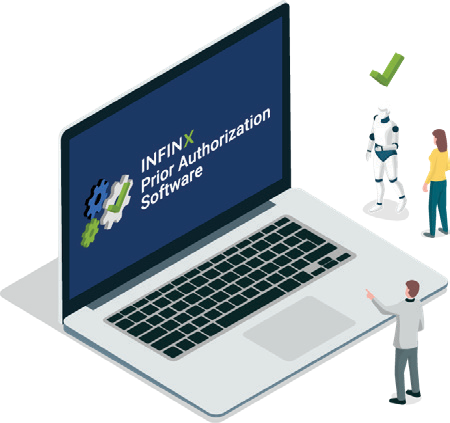White Paper
How Fast Healthcare Interoperability Resources Positively Impacts Automated Prior Authorizations
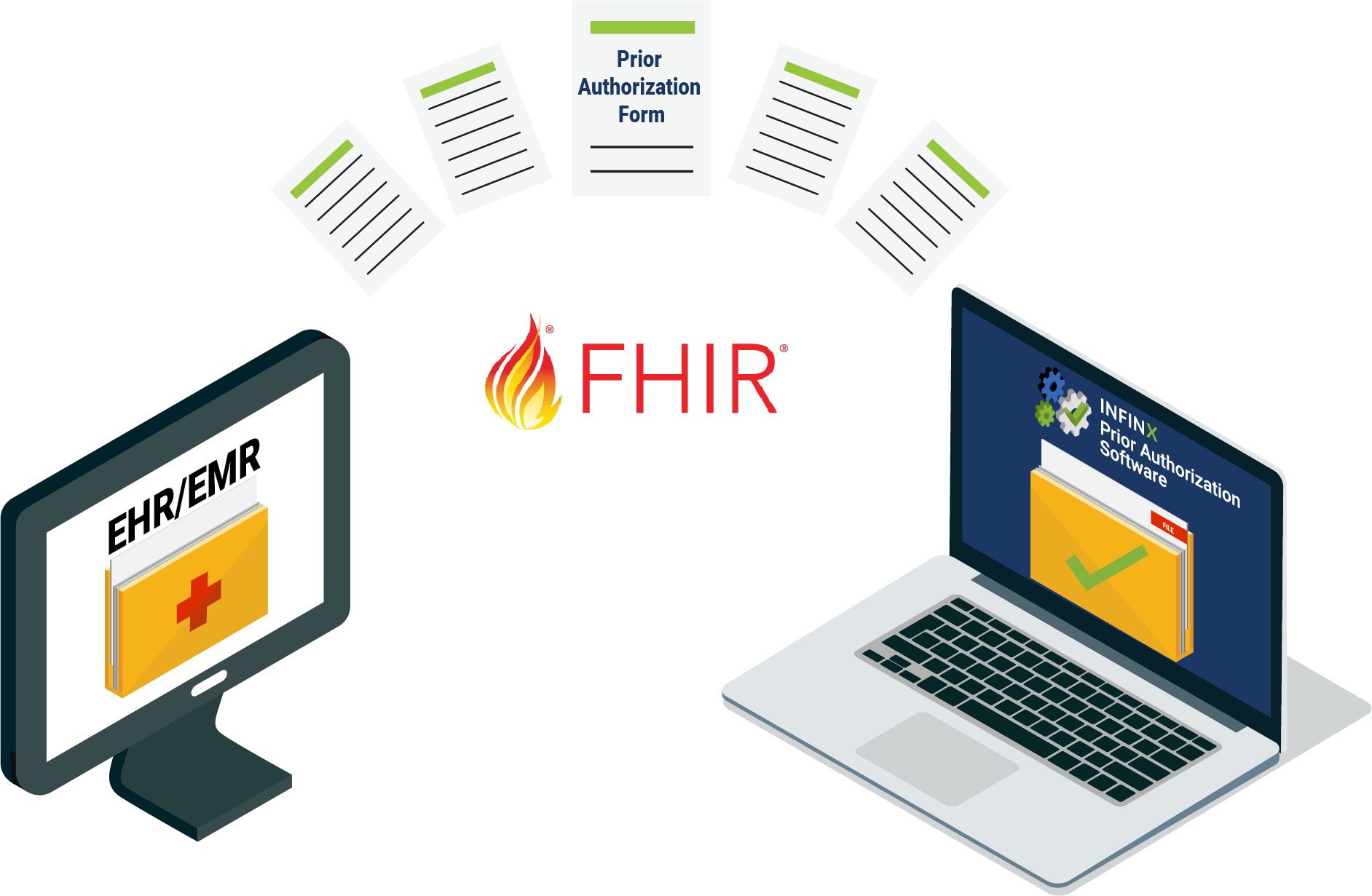
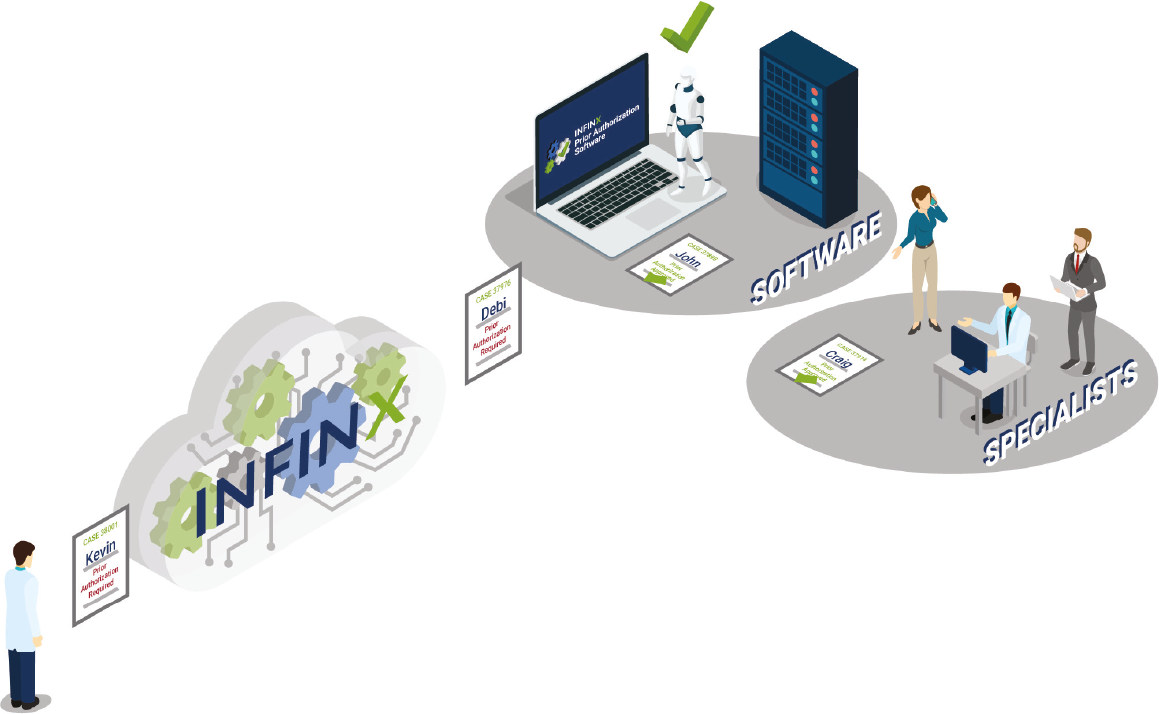
Executive Summary
With the insurance industry unrelenting on requirements impacting the prior authorization process, hospitals and practices continue to struggle with a burdensome and redundant system’s operational implications. But now, with Fast Healthcare Interoperability Resources (FHIR) a viable alternative, advancing the constructive, safe, and secure communications between administrative and clinical information systems for prior authorizations is within reach and will have positive industry-wide implications.
The Standardized Exchange of Healthcare Information
With the Interoperability and Patient Access Final Rule being issued on July 17, 2020, by the Centers for Medicare & Medicaid Services (CMS), innovation is poised to accelerate on internet-based interfaces that create a framework to extend and adapt resources. One component of the rule, FHIR will standardize the exchange of healthcare information across most applications, i.e., EHR/EMR’s, mobile apps, cloud communications, and even wearable devices.
Defining FHIR with Prior Authorizations
Data exchange between payers and providers can be arduous, complex, and often requires manual intervention for things like patient records and clinical results. For prior authorizations specifically, this creates additional administrative workflow on top of an already cumbersome system when payers request supporting patient detail.
Essentially, much like using the internet allows you to access a URL and complete tasks using a standard browser running on any device, FHIR hopes to do the same by using internet-based uniformity to communicate healthcare data standards between payer and payee. The goal is to enhance the data exchange by removing the complexities of diverse technical standards in data management systems used by payers, providers, and healthcare systems by creating a “universal” vehicle.
Developed by HL7, FHIR “leverages existing logical and theoretical models to provide a consistent, easy to implement, and rigorous mechanism for exchanging data between healthcare applications.” Like when using URLs, FHIR makes it possible to share information between systems regardless of the software being used and encourages developers to standardize browser applications to enable access.
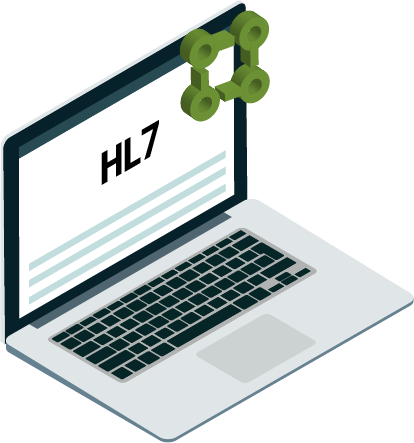
Can Prior Authorizations Be Brought Under Control Using FHIR?

It doesn’t matter if you’ve recently completed your training or have been a board-certified specialist for many years; prior authorizations are a necessary frustration that can’t be avoided. For a growing number of procedures, tests, and medications, insurance companies will require providers to document the necessity of treatment before agreeing to reimburse.
Prior authorizations create frustration in a variety of ways, including:
• Delaying patient care for up to three or more weeks
• Causing a provider to alter their treatment plan for expediency
• Being more susceptible to review and rejection because of insurance company bias
• Being administratively burdensome, taking several hours to several weeks to complete
• Negatively impacting the scheduling process and, ultimately, the patient experience
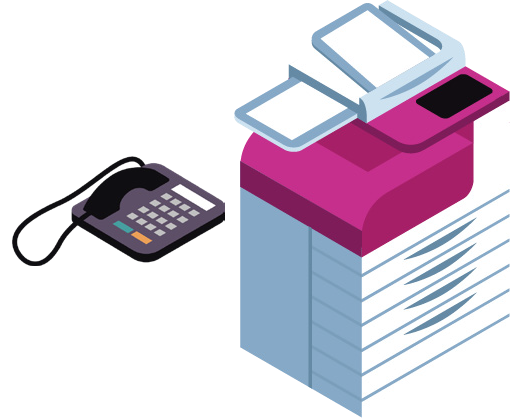
Will FHIR Enhance Electronic Prior Authorizations?
As reported in the 2019 CAQH Index,2 87% of prior authorizations are still done manually, and there remains tremendous efficiencies to be gained as more and more providers and healthcare systems convert to electronic prior authorizations. However, even with electronic adoption at 100%, there would continue to be the manual process required to submit the requested patient records to insurance payers to validate the various payer inquiries.
As part of the CMS’s final rule that creates a foundation for data sharing, the Office of National Coordinator for Health IT (ONC) contributed the technical standard that adopts FHIR 4.0.1 standards and requires certified patient records vendors to incorporate the standard by January 2022. Groups like Infinx are developing complementary prior authorization technologies poised for use as EHR/EMR vendors upgrade their products.
3 Ideas to Make the Prior Authorization Process More Effective
Regardless of the industry stakeholder intention, it doesn’t appear that prior authorizations will go away completely. Instead it’s more likely that insurance companies will reign supreme, and they will continue in some (hopefully) streamlined form.
No matter how frustrating, prior authorizations do seem to help curb healthcare costs. So the question may be how to make them effective in a hospital or practice while reducing the administrative burden/costs and improving revenue? Here are three ways to make the process more functional:
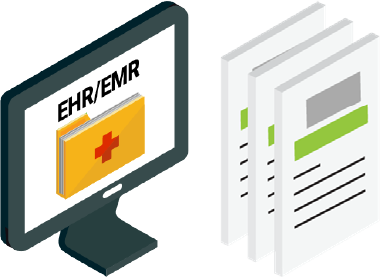
1. Always submit organized, clear documentation — Implement a protocol or EHR/EMR template that ensures comprehensive documentation. Understand and stay ahead of what they are going to request, making sure to fully complete prior authorizations paperwork
Under the Affordable Care Act, all insurance payers are required to have an appeal process in place. Ask for a 72-hour expedited or urgent review to speed the process along even further.


3. Consider a fully-automated prior authorization process — Engaging advanced automation means using AI-assisted software that is secure, comprehensive, and fully electronic. Linked through FHIR to the EHR/EMR system, prior authorization information can be collected, submitted, and followed up 24/7 in real-time.
When using a fully automated prior authorization system that maximizes FHIR, there is a significant opportunity to reduce administrative time and costs, and schedule patients much more efficiently. If an appeal is needed, an automated system would generate and submit the appeal based on pre-defined parameters utilizing the appropriate documentation.
Improving the Overall Prior Authorizations Process
Using up-to-the-minute advanced automation, a prior authorization software that uses artificial intelligence (AI) and machine learning capabilities technology, maybe the most beneficial solution.
To outline, advanced automation and AI-driven software can be integrated bi-directionally with the hospital or practice’s EHR/EMR and the billing system being used for client management through cloud-based FHIR technology. As soon as the patient’s order is input, tests or medications requiring prior authorizations would be electronically identified, provider/facility detail, patient demographics, and test/diagnosis information would be collected, and an approval request submitted to the insurance payer portal required.
AI-driven software with machine learning capabilities would access continually updated insurance information clearinghouses storing thousands of insurance groups and plans. Each with their unique guidelines and requirements, and electronically determine the prior authorization parameters for routing the request. Prior authorization approvals that once took between a couple of hours to several days or weeks can now be accomplished in seconds with a 98+% accuracy rate as documented in Healthcare IT News, which outlines RadNet’s successes using Infinx’s Prior Authorization Software solution.

• Initial Processing — From the moment patient information is entered into the EHR/EMR system; guided processes monitor key identifiers to initiate the prior authorization. Matching ordered tests or medications while constantly updating insurance prior authorization requirements, the system stands ready to gather the required information and submit the request in real-time.

• Continual Follow-Up — Once the prior authorization approval has been submitted, electronic follow-up occurs 24/7 until a final resolution is obtained. If additional information is required or an appeal is necessary, the practice is notified immediately so that a response can be crafted and submitted as soon as possible.

• Dashboard Notifications — Waiting for insurance payer responses has historically been a time-consuming affair that took hours of manual follow-up and burdensome administrative effort.
With an interactive dashboard, today’s AI-driven Prior Authorization Software gives a practice snapshot clarity on all active prior authorization requests so that patient and clinician questions can be answered, and follow-up made immediately.

• Scheduling — Alleviating the frustrations of having to schedule and reschedule patients based on prior authorizations, a PT or OT practice would have much more accurate parameters to allow a more efficient process for everyone improving the patient’s experience and enabling the providers to focus on providing care.

• AR and Claims Management — — With less prior authorization problems comes less rejected or denied claims, possibly up to 31% fewer according to MGMA, and more revenue is hitting the bottom line. As a bonus, AI-driven software exists to handle denied claims like prior authorization solutions with a>95% quality standard.

• Analytics and Reporting — Bringing full transparency to future operations, timely analytics, and reporting pinpoint any breakdowns inefficiency or areas needing improvement so that future patients benefit from an even better experience.
Is Privacy with FHIR a Concern?
Two main security concerns seem to dominate the FHIR discussion. First, is an internet-based system safe for confidential medical information? FHIR-based technology brings the same privacy and security benefits that we currently enjoy with banks and retail websites. As long as security measures are incorporated as a standard during development, there is no reason why FHIR can’t be more secure than some current systems.
And second, how can you manage the level of access that payers have to patient information? While payers want all the information available, providers and healthcare organizations should only share the data required to meet medical necessity. FHIR brings flexibility in defining payer-specific required data fields and will ensure that payers receive the necessary patient data while protecting remaining information from further disclosure.
Using the scalable Infinx Prior Authorization Software solution, a Health Level 7 (HL7) or Application Program Interface (API) based integration can be created, and is compatible with all leading EHR/EMR and billing systems. The Infinx Prior Authorization Software embeds all Patient Health Information (PHI) in layers of security that is Electronic Data Interchange (EDI) compliant and stores the data on the cloud using 64-bit and 256-bit encryption that guarantees 100% HIPAA compliance.
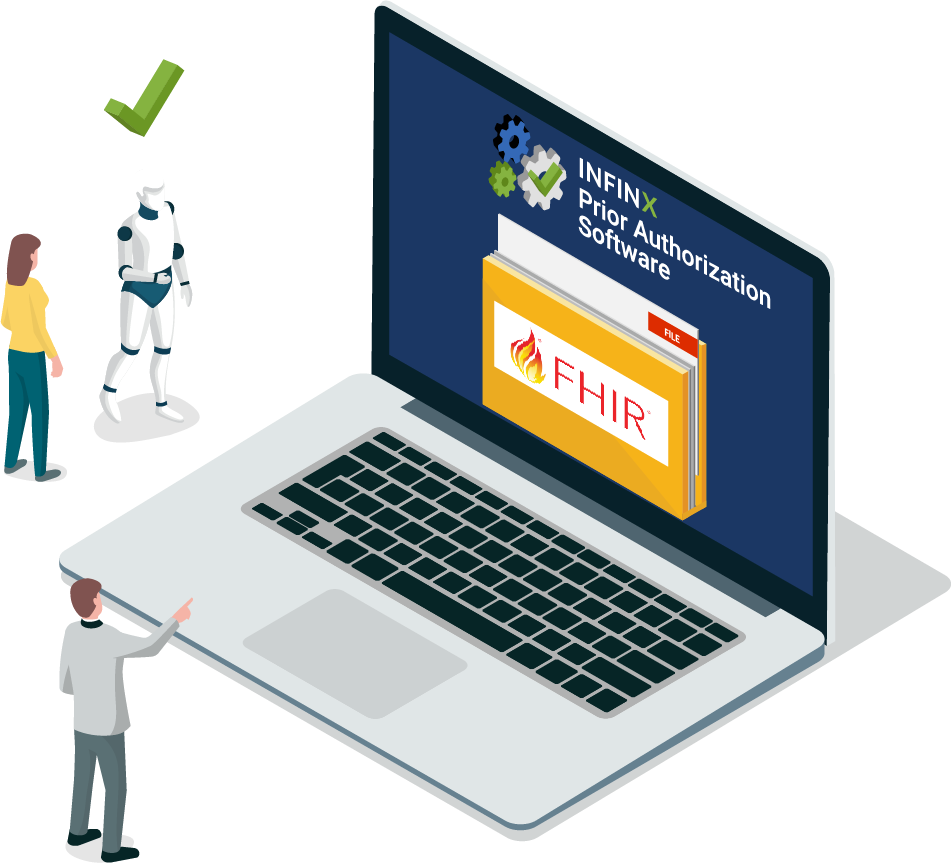
The Bottom Line
Being able to share data between payers and healthcare providers has several advantages, including optimizing a valuebased payment system through easily shared data and building more collaborative relations within the complex thirdparty payer structure.
When we look specifically at prior authorizations, FHIR coupled with Infinx’s augmented intelligence solution creates a comprehensive and intelligent system that reduces redundant workflow, captures additional revenue, and improves the patient experience by reducing dissatisfaction and potential abandonment of care due to the protracted prior authorization approvals process.
Contact Infinx to learn more about our electronic Prior Authorization Software solution.
Thanks for reading. If you’d like see the footnotes, please download this white paper as a pdf here.
About Infinx
Infinx provides innovative and scalable payment lifecycle solutions for healthcare practices. Combining an intelligent, cloud-based platform driven by artificial intelligence and automation, with our trained and certified prior authorization, coding and billing specialists, we help clients realize revenue, enabling them to shift focus from administrative details to billable patient care.
